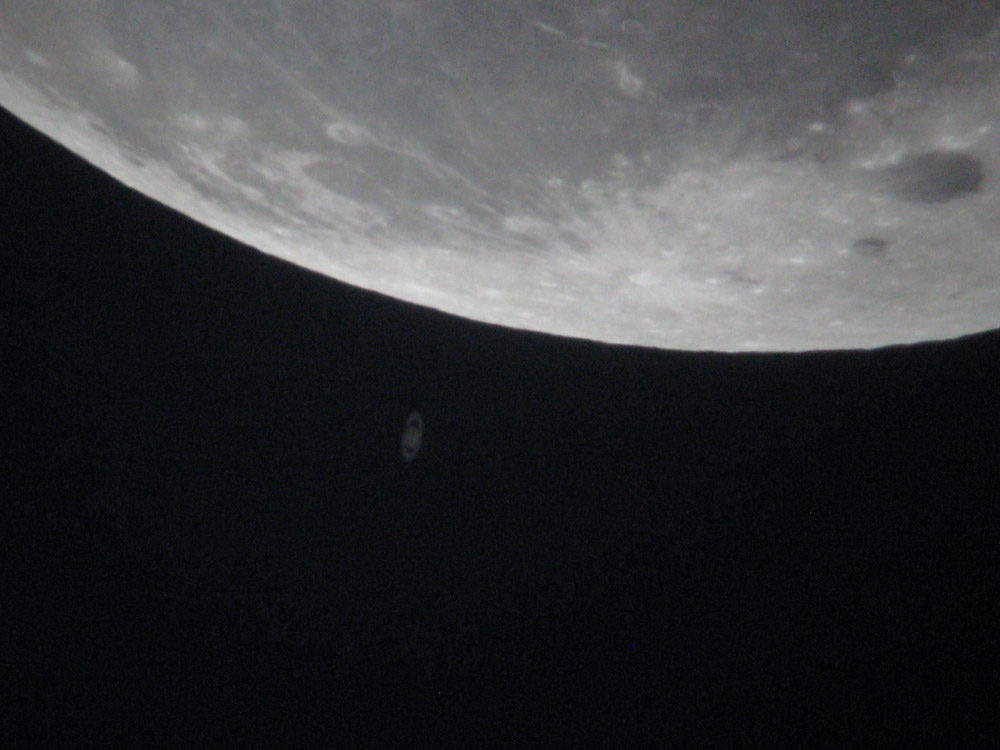June 12, 2024
Interworld Comparison
Originally published February 23, 2014

image by Kerryn Murphy, Perth, Western Australia
When I first looked at Kerryn's image my thought was that I would have to photoshop Saturn to enhance its visibility. But then I realized that the message here is that the Moon is a lot brighter than Saturn. I know that, but an image is a more dramatic way to absorb that than just saying the apparent magnitude numbers. The full Moon's apparent magnitude is -13, and Saturn is +1. This 14 magnitude difference means that the full Moon is about 400,000 times brighter than Saturn. That is not the impression in this image. Using the histogram tool in Photoshop, I find that the planet (not including rings or space) of Saturn has a value of 48 out of the 256 shades of grey scale, whereas the entirety of the Moon imaged here is 120, with bright craters going up to 210. So, pixel to pixel, the Moon is about 120/48 = 2.5 times brighter than Saturn, and the bright parts of the Moon are about 4 times brighter. But the reason the full Moon is really much brighter than Saturn is that the Moon occupies a much larger area in the sky than does Saturn (about 2000 times greater angular size). Another piece of information from Kerryn's color image is that Saturn is bluer than the Moon. I also think there is a hint of yellow but that may just be because I remember that Saturn is yellow in the eyepiece.
Chuck Wood
Technical Details
Feb 22, 2014, a daylight event, ingress 5.58 am and egress at 7.23 am. Single shot - handheld to eyepiece. 8"Dobsonian telescope + 20 mm eyepiece + Canon IXUS 75 camera.
Yesterday's LPOD: Texas Moon
Tomorrow's LPOD: A Fanatic's Moon
COMMENTS?
Register, Log in, and join in the comments.



